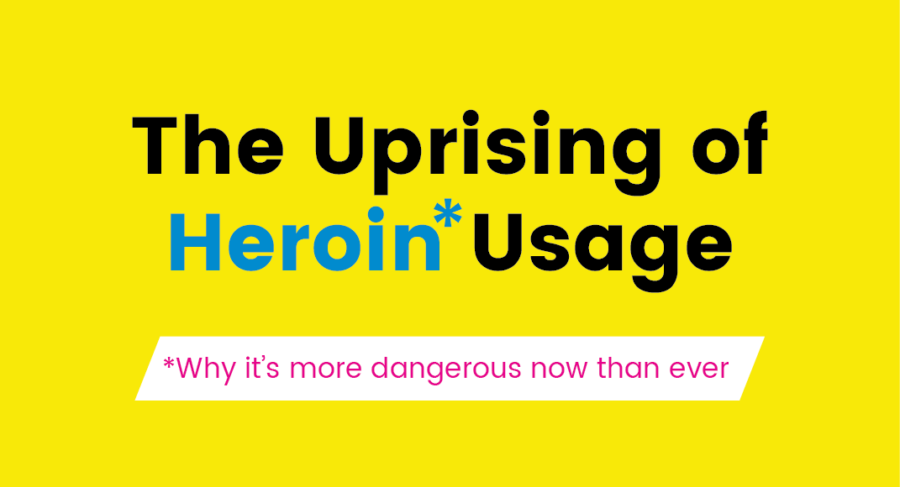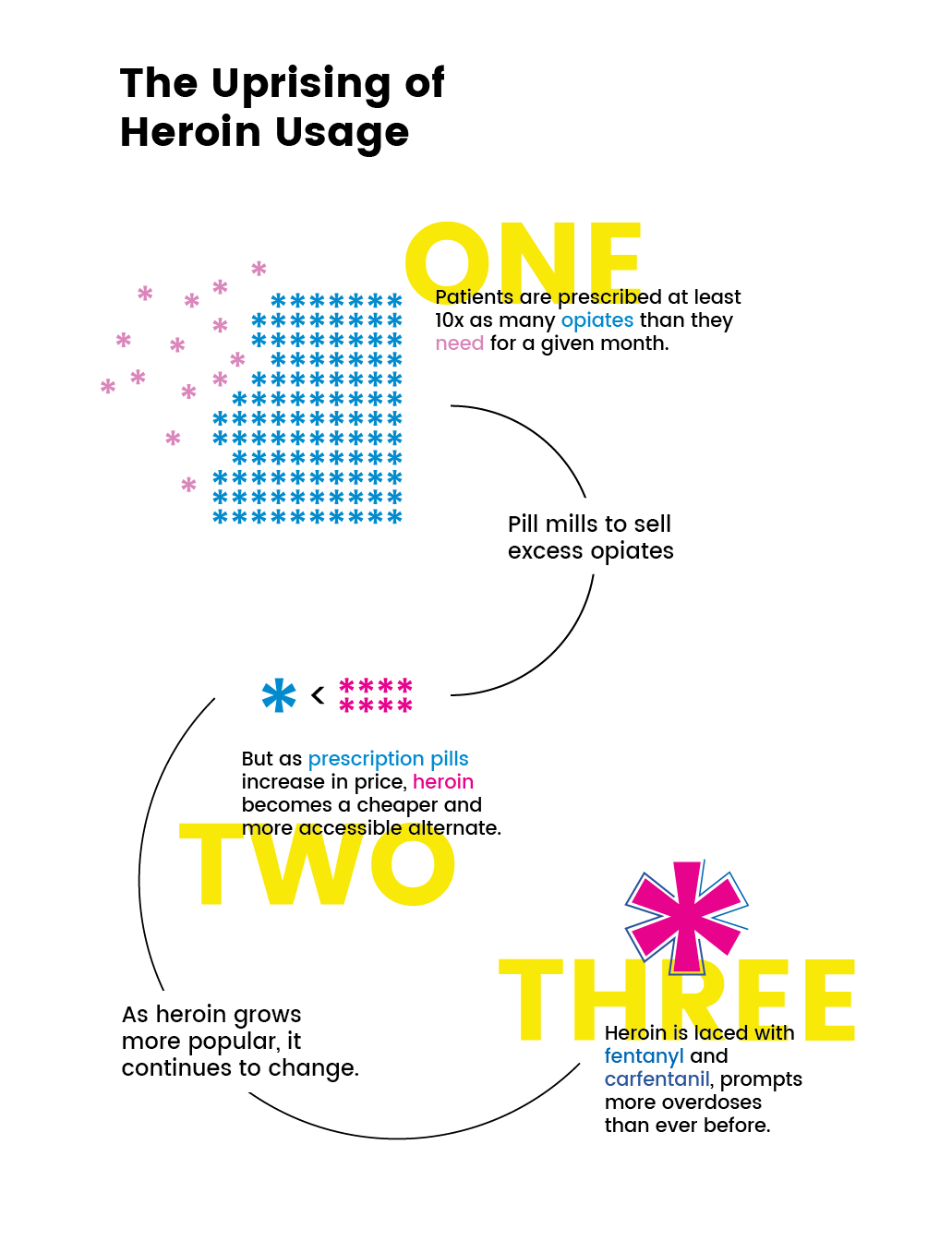Why it’s more dangerous now than ever
A thin tire screeches to a halt on the esplanade outside of the Student Center. Noticing a flyer saying something about “chalking the K,” a young man hops off of his bike. Realizing that the chalk sitting around the Risman Plaza is meant for students and faculty who wish to write something regarding drug use, he sits down to chalk some words of awareness for about 20 minutes. There are various words and drawings covering the concrete, some referring to family members who have been lost or are currently suffering from drug use and others being words of encouragement for those struggling themselves.
This act is just one example of raising awareness for the heroin and opiate epidemic taking over Ohio.
It is a generally known subject that heroin is consistently growing to be a more commonly used drug than it once was. Every once in awhile, wind will catch news of someone new who has overdosed from heroin. What doesn’t seem to be commonly talked about however, is why the epidemic started in Ohio and why our state is number two in the nation for heroin overdoses, according to Community Resource Officer, Tricia Knoles.
The Outbreak:
One slice of the complex issue that contributes to how the epidemic started has to do with the economic downfall in the United States, specifically Portsmouth, Ohio.
“A lot of people lost jobs and there’s several pockets in the United States where, uh, people were prescribing opiate type drugs,” said Maureen Keating, a Chemical Dependency Counselor speaking of those who worked physical jobs that led to injuries. “Doctors were prescribing way over what you would normally want to use because they were told it was safe.”
“Way over” specifically means 120 pills a month being prescribed, rather than the mere 14 pills that are actually sufficient for acute pain. People then took advantage of the excess amount of pills they were receiving for originally legitimate pain issues and opened pill mills dispersing large amounts of the drug.
Keating said once the pill mills were shut down, opiates were still distributed to people who had now become addicted, just in different ways. For those in the middle class, dealers delivered the drugs by car in exchange for money. Officer Knoles said the start of the epidemic is up for debate, and others say Ohio’s mainstream lines of Route 71 that run directly through our state contribute drastically to the issue.
The Addiction:
It’s no surprise that one would choose heroin when they are able to buy it for 6 to 8 dollars a hit instead of dropping 80 dollars on one pill, according to Keating. Heroin is a “poor man’s” drug, so once the economy crashed, it’s the one drug that stuck around and eventually spread.
Another factor Keating said contributes to why drug use begins for most people is simply because of physical and emotional pain. Because of this deep pain resonating inside someone, a drug becomes their solution, which may seem to work for a short period of time.
“That pain can be psychological, it can be physical, it can be like almost spiritual. It’s like soul pain,” said Keating.
Keating feels it’s important for people to realize that not everyone gets addicted to heroin after just one use. However, once that addiction does set in for someone, the limbic system in their brain is hijacked, and they cannot access the important part of their brain that allows them to make logical choices. Heroin addicts become servants to the drug, and the drug in turn makes choices for them. Those choices may include stealing from family and friends and succinctly continuing the use of heroin.
The Present and the Future:
As heroin grows more popular, it continues to change. According to Officer Knoles, heroin is now being laced with fentanyl and carfentanil, which leads to people overdosing much more than before. The DEA even issued a nationwide warning to the public and law enforcement officials that carfentanil is 50 times more potent than heroin and stated the crazy dangerous synthetics can kill those who come into contact with it easily.
Keating doesn’t commonly find students who admit to heroin use, and if they do use it, they tend to leave campus in order to recover and find proper care. There may be minimal heroin and opiate use on college campuses, but that doesn’t change how available the substance is in Northeast Ohio.
“I could probably buy some right now if I wanted to, and I’d have it within an hour to two hours,” said Keating.
People directly using heroine are not the only ones majorly affected by the epidemic. It takes a toll on every single person around them also.
“It’s affected every class, every category, every person,” said Officer Knoles. “I myself have two retired law enforcement friends that their son passed this February. My daughter’s friend, her dad, just passed a couple weeks ago, and they lived right behind me, so it affects everybody.”
To help slow this epidemic down, there are programs designed for addicts and family and friends of addicts in Portage County. Horizon House, Ohio C.A.N., and a Portage County group that meets at the public Kent Library once a week are all available to serve those in need of support. Project DAWN is a program set in Portage County to offer free lessons on how to operate Narcan, a nasal spray used on those who overdose. The free program provides each person with two doses, and the treatment is available for purchase at CVS for those who don’t prefer the program.
With the increasing danger of heroin use and its epidemic in Ohio, awareness is vital. Officer Knoles expresses to any addicts or anyone who knows an addict, to reach out for help.
“I kind of hold on to hope,” said Keating, regarding the future of the epidemic, “I think it’s probably going to get worse before it gets better, but I also know that people are resilient.”
Sources:
https://www.dea.gov/divisions/hq/2016/hq092216.shtml



















